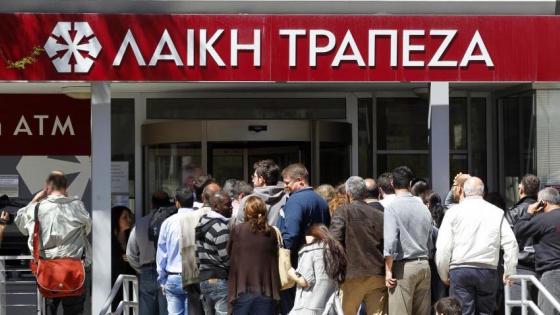More than ten years on from the onset of the Global Crisis, public finances in many developed countries remain stretched. Higher levels of public debt to some extent reflect large bank bailout bills that were necessary to rescue banks deemed ‘too big to fail’. While such direct costs have varied from country to country – in some cases, like the US, direct costs have been largely recovered – the crisis has also had undisputed indirect effects on public finances everywhere, as a result of balance sheet recessions, economic slowdowns, and increased unemployment.
Understandably, therefore, one of the key lessons from the crisis for governments has been the need to introduce new bank resolution regimes that shift the burden of failing banks from the taxpayer to investors. In Europe, the Bank Recovery and Resolution Directive (BRRD), introduced in 2014 across the EU28, includes a ‘bail-in’ mechanism which aims to ensure that banks’ shareholders and creditors – including uninsured depositors – pay their share of costs.
In addition, the BRRD provides authorities with a comprehensive framework for dealing with failing banks at both the national and cross-border levels. The BRRD also aims to maintain financial stability by ensuring continuity of critical banking functions during resolution, and provides a range of restructuring and resolution tools intended to restore the viability of parts (or all) of a failing bank. Similar resolution arrangements have been, or are being, introduced in many other countries, including India, Turkey, and the US.
Are the new bank resolution frameworks all they have been hyped up to be?
While the BRRD has only recently been applied officially for the first time – in the case of Banco Popular, a Spanish medium-sized bank that was about to fail in 2017 – many of its provisions, including the bail-in mechanism, were first used to resolve the banking crisis in Cyprus during the first half of 2013.1
The crisis was triggered by losses from the Greek PSI in late 2011 in the island’s two biggest banks. But its roots were in the doubling of the banking system in the previous six years due to large capital inflows, primarily from Russia and Ukraine. During the period 2005-10, bank credit expanded at 24% per year, fuelling a property bubble and resulting in the ratio of private credit to GDP rising to 287% (the third highest in Europe).
Bank rescue costs, estimated by an independent diagnostic exercise, amounted to 57% of GDP. As such, the Cypriot crisis was equivalent to that in Indonesia in 1997, the biggest banking crisis ever recorded (Laeven and Valencia 2013). The Debt Sustainability Analysis conducted by the IMF revealed that Cyprus could ill-afford to rescue its two largest commercial banks – the bill to save them was nearly 50% of GDP.2 Not surprisingly, therefore, international creditors led by the IMF insisted on the bail-in solution as the only way to resolve the crisis.
The study of the Cypriot crisis can offer important insights into the new framework for resolving banks. For example, it has been used to address questions relating to the effects of bail-ins on financial stability – one of the inherent conflicts in the new resolution framework (Philippon and Salord 2017). Specifically, a significant new study by Brown et al. (2018) reveals that the bail-in of retail investors (bondholders and uninsured depositors) in Cyprus undermined short- and medium-term confidence among retail investors.
The findings of Brown et al. are drawn from a survey of 800 Cypriot households in 2013-14. The respondents were clients of the two banks that were resolved – Bank of Cyprus and Laiki – and/or clients of other financial institutions. Importantly, households with deposits above the insurance threshold (€100,000) were over-sampled: 49% had at least one bank deposit over this threshold. Within their sample, 55% of households incurred a direct financial loss, 28% experienced a bail-in of uninsured deposits, 16% experienced a bail-in of bonds, and 44% suffered a loss of bank equity. Of the sampled households, 30% incurred a loss from two sources and 10% from all three.
While the results in Brown et al. are novel, they are likely to be an over-estimation of the impact of the bail-in on depositor confidence. This is not just because of over-sampling of affected households – as only 4% of depositors were bailed-in – but also because of other shocks to depositors’ confidence that occurred at more or less the same time (Demetriades 2017a, 2017b).
Specifically, Brown et al. do not refer to the first Eurogroup agreement on Cyprus, announced on 16 March 2013, which involved imposing a deposit levy on all deposits in the entire banking system, consisting of insured and uninsured deposits at six domestic banks, 35 foreign banks and over 80 credit cooperatives. The ‘haircut’ that was agreed (but never implemented because it was turned down by Parliament on 19 March 2013) was 6.75% for deposits under €100,000 and 9.9% for deposits over €100,000.
This ill-conceived deposit tax turned out to be a massive shock to depositor confidence not only in Cyprus but also in other parts of the euro area. Its rejection by parliament was, by itself, a further blow to confidence since without a financial assistance programme, Cyprus faced the prospect of a sovereign default, financial meltdown and exit from the euro. The traumatic events of those days, which also included a prolonged imposed bank holiday and new limits on ATM withdrawals, culminated with banks reopening on 28 March under severe capital controls that included restrictions on flows of funds between banks within Cyprus.
As a result, it is extremely difficult to disentangle the effects of the bail-in on investors’ confidence from the independent shocks of the deposit tax, capital controls, and the near exit from the euro area. All of these shocks compounded the effects of the bail-in and could in principle have been avoided. It is therefore hard to accept that the bail-in alone was responsible for the shocks to depositor confidence reported by Brown et al.
Indeed, the effects of all combined shocks were not long-lived. By June 2014, the IMF had commended the Cypriot authorities for the stabilisation of the banking sector, which it described as a “major achievement”.3 Capital controls were fully lifted by early 2015. By then, the country was already out of recession and bank deposits had started to grow. By January 2017, Bank of Cyprus, described by the Financial Times as the bank that came “back from the dead”,4 was listed on the London Stock Exchange.
Unintended (and under-researched) consequences of the bail-in
There were two unintended, albeit related, consequences of the bail-in which proved more toxic than could ever have been imagined.5
The bail-in of uninsured depositors can result in unpredictable switches in ownership in the resolved institution. The new owners may not want to own a bank and may also not be fit and proper to do so. This is the first unintended consequence of the new bank resolution framework.
In the case of Cyprus, the ten largest new shareholders turned out to be politically exposed Russian and Ukrainian oligarchs (one of them, who eventually became the bank’s vice president, was described by Reuters news agency6 as a close ally of the Russian president). In addition, the ten largest shareholders were represented by the top five Cypriot law firms, all of which were politically connected (one belonged to the family of the then newly elected Cypriot president).
Not surprisingly, the fitness and probity checks that are normally conducted quietly behind the scenes by the supervisor turned out to be beyond surreal. Suffice to say that they became headline news in the local media and generated a toxic political climate against the central bank and its governor.7 This was in addition to the political pressures on the central bank aimed at reducing the bail-in percentage. If heeded, these pressures would have resulted in an under-capitalised bank, with unimaginable consequences.
The erosion of the independence of the central bank that followed these political attacks was the second unintended consequence of the bail-in. It included legislative amendments to the central bank’s governance structure that undermined its decision-making powers and changes to the resolution legislation that shifted powers from the central bank to the government. These amendments were voted in by Parliament in the summer of 2013, notwithstanding an ECB legal opinion8 warning against their enactment.
These developments, which I analysed in Demetriades (2017b), have brought to the surface some less well-known legal limitations in the scope of central bank independence, if not the ECB’s reluctance to take more drastic action.
Mersch (2017), for example, explains that tasks and functions conferred on the ECB by secondary legislation after the crisis (for example, micro- and macroprudential supervision, and financial crisis management) are not covered by the very high level of independence provided to the ECB under the Treaty for the pursuit of its primary objective of price stability. While there may be sound legal and historical reasons why this is the case, the economic case for delegating banking supervision or financial crisis management to independent central bankers is not dissimilar to that of monetary policy. If anything, the experience from the management of the crisis in Cyprus confirmed that an independent central bank was better placed than politicians to take time-consistent actions that were politically costly in the short term but beneficial in the longer term.
The toxic fallout on central bank independence in Europe
The little-known toxic fallout on central bank independence from the Cyprus bail-in, like other forms of financial contagion, has not remained confined within national borders. In the last three years, the Greek,9 Portuguese,10 and Slovenian11 central banks and their governors have found themselves in the eye of political and legal storms when taking actions to resolve failing banks and/or restore stability in their banking systems.
By contrast, during the recent banking crisis in the Veneto region, Italy’s central bank sided with the Italian government to prevent the application of BRRD. The two banks that failed, which had been systemic in terms of their supervisory arrangements (they were supervised by the Single Supervisory Mechanism), were deemed non-systemic by the Single Resolution Board and are therefore being dealt with by Italian insolvency legislation. This effectively allows the Italian government to inject around €10 billion of taxpayers’ money to bail out retail investors in the banks.
Yet, Italy is perhaps the euro area country that can least afford to bail out its banking system. The Bank of Italy’s decision to back a decision that smells of short-term political expediency indicates that central bankers’ behaviour in the euro area may already be changing in light of the new, narrower, definition of their independence. This inevitably raises the legitimate question of whether central bankers in the euro area will continue to do “whatever it takes” to save the euro.
References
Brown, M, I Evangelou and H Sixt (2018), “Banking crisis, bail-ins and money holdings”, VoxEU.org, 1 February.
Demetriades, P (2017a) "Political economy of a euro area banking crisis”, Cambridge Journal of Economics 41(4): 1249-64.
Demetriades, P (2017b), A diary of the euro crisis in Cyprus: lessons for bank recovery and resolution, Palgrave Macmillan.
Laeven, L and F Valencia (2013) “Systemic banking crises database”, IMF Economic Review 61: 225-70.
Mersch, Y (2017) “Central bank independence revisited”, Keynote address at the Symposium on Building the Financial System of the 21st century: An Agenda for Europe and the United States”, Frankfurt am Main, 30 March.
Philippon, T and A Salord (2017), "New ICBM/CEPR Report: Bail-ins and Bank Resolution in Europe”, VoxEU.org, 22 March.
Endnotes
[1] The Cypriot resolution law, which was passed during the crisis, was in fact modelled on early drafts of the BRRD, with contributions by the ECB, the European Commission and the IMF. As such, at the time it was the most modern bank resolution legislation in Europe. The BRRD in its final form had some additional refinements that were informed by the Cyprus crisis.
[2] In terms of relative size, Bank of Cyprus and Laiki had become the biggest in Europe, with a combined balance sheet size that had reached 400% of GDP.
[3] https://www.imf.org/en/News/Articles/2015/09/28/04/52/mcs073014
[4] https://www.ft.com/content/47ec92b8-de55-11e6-86ac-f253db7791c6
[5] For more details, see Demetriades (2017b).
[6] https://www.reuters.com/article/bankofcyprus/russians-including-putin-ally-join-bailed-in-bank-of-cyprus-board-idUSL5N0H63FF20130910
[7] https://www.bloomberg.com/news/articles/2013-05-29/how-trading-blame-led-to-death-threats-for-ecb-s-cypriot-banker
[8] https://www.ecb.europa.eu/ecb/legal/pdf/en_con_2013_41_f_sign.pdf
[9] https://www.ft.com/content/a2ae6c86-cd3c-11e7-b781-794ce08b24dc
[10] https://www.ft.com/content/320cb516-d700-11e5-8887-98e7feb46f27
[11] http://www.dailymail.co.uk/wires/reuters/article-3679256/Slovenia-investigates-central-bank-chief-rebuffs-ECB.html



